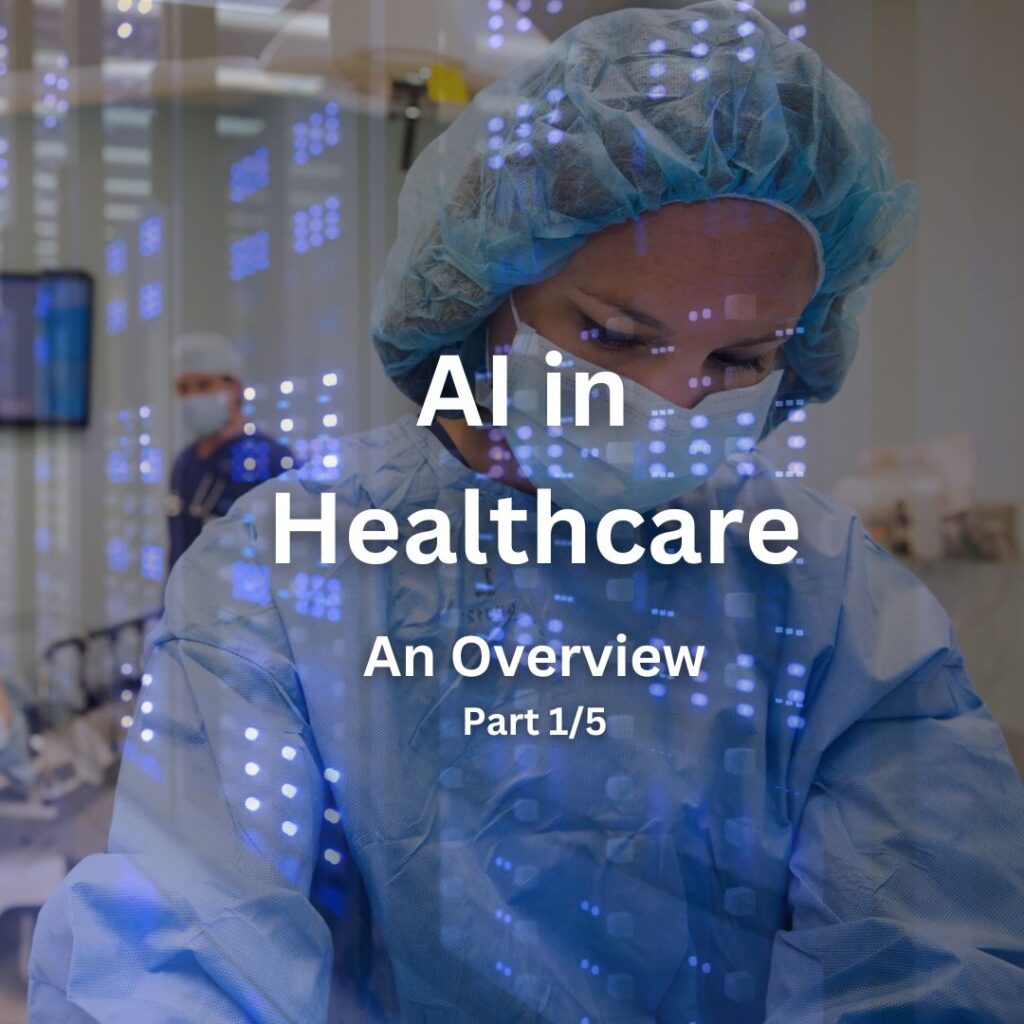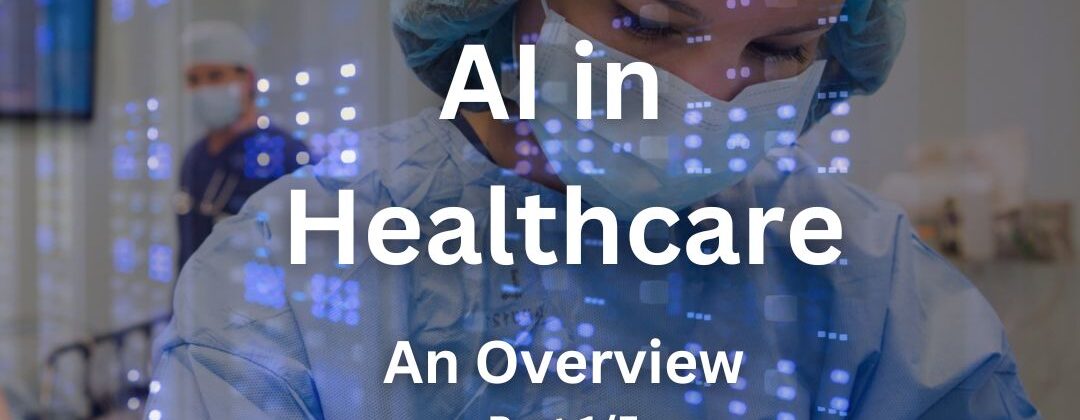
Introduction
Artificial intelligence (AI) – the ability of computer systems to perform tasks that typically require human intelligence – is transforming nearly every industry. Healthcare is no exception. AI is being integrated throughout the healthcare field, from assisting doctors in making diagnoses to streamlining hospital operations to discovering new life-saving drugs. In the past three years, investments in digital health have been at $87.9B, according to CB Insights Q3 2023 State of Digital Health.
Before we get too far, let’s first look at some definitions:
Algorithms: Step-by-step instructions for computers to follow. These tell computers what to do, analyze, load, or do some other operation.
Machine learning: Computers learn patterns from data to make their own decisions. You can see this being used in recommending additional purchases, movies, apparel, books, etc.
Artificial intelligence: Computers mimic human intelligence to understand their surroundings and solve complex problems. You can see this in almost everything today, from writing to image recognition and creation.
Artificial general intelligence: Computers that can understand and solve problems similar or better than humans across many subjects. This is the next wave where systems will start adding intelligence to form new ways of doing work, art, processes, and more. It’s also the type of intelligence that creates a lot of concern from those who know how it works.
The Explosive Growth of AI in Healthcare
According to Accenture, critical clinical AI applications can potentially create $150 billion in annual savings for the United States healthcare economy by 2026, just three years away. Personally, I think it will be more. Beyond the direct economic impacts, AI has untold potential to improve patient outcomes, expand access to care, and discover life-saving treatments.
In medical imaging, AI can automate the detection of abnormalities and develop care pathways – analyzing CT scans for early signs of lung cancer, detecting diabetic retinopathy through retina photos, or spotting stroke indicators in MRI scans. In diagnostics, AI symptom checkers provide preliminary risk assessments and treatment recommendations to expand access and healthcare system capacity. The market forecast for medical imaging is expected to reach more than $1.73 Billion by 2027.
But AI will soon move far beyond assisting doctors. Predictive modeling can give doctors unprecedented lead time to act ahead of acute medical events. AI also shows massive promise in pandemic preparedness by forecasting outbreak hotspots and enabling rapid development of vaccines, something I know a little about.
Drug discovery is also accelerated through AI as companies like BenevolentAI used AI to derive a novel target drug for Ulcerative Colitis. Generate Biomedicines is another company using Machine Learning and AI to discover therapeutic molecules targeted to specific biological processes. Big pharma, like J&J, is also spending heavily in this space. The ability to quickly create targeted medicines will profoundly improve the quality of life for countless patients.
In all these applications and more, thoughtful integration of AI promises to increase the capacity and quality of global healthcare. Patients worldwide stand to benefit from this 21st-century technology. Still, as we’ll explore in this series, challenges remain to ensure AI is deployed safely, ethically, and with the well-being of all people in mind.
This 5-part series will explore the ways AI is improving medicine and care. Whether you’re a patient, a healthcare practitioner, or simply interested in the intersection of technology and medicine, I think you’ll find valuable insights in this series.
Part 2 – Clinical Operations
The development of AI-powered co-pilots – software that can analyze patient data and offer diagnoses and treatment recommendations nearly as competently as a human clinician. Is this the future of healthcare? Can AI doctors expand access to quality care? We’ll look at the state of the technology, its strengths and limitations, and what needs to happen for AI in the provider space to be widely adopted.
Part 3 – Running a Hospital
Running a hospital or clinic is a complex ordeal. AI’s impact on clinical and operational efficiency will be the focus of this part. We’ll see how machine learning can optimize complex systems within healthcare organizations – improving resource and staff allocation, accelerating imaging analysis and lab work, enhancing hospital productivity, and more.
Some of these systems are already inside provider networks, taking some load off of administrative tasks. These are the first steps in using AI in hospital operations.
Part 4 – AI Drug Discovery
The conventional drug discovery pipeline relies on trial-and-error testing, animal studies (less so today), and lengthy clinical trials. It’s an expensive and inefficient process that can take over a decade. In Part 4, we’ll explore how AI is turbocharging pharmaceutical R&D – quickly screening thousands of molecular compounds and predicting which ones show promise for treating specific diseases. AI tools for drug discovery are game-changers that can get life-saving medications to patients faster and at lower costs.
Part 5 – AI for Elder Care
In the final installment, we examine applications of AI that can personally and emotionally support senior citizens and almost all patients. Why eldercare you ask? Because as the global population ages, there is an increasing need for systems that can monitor well-being, provide companionship, and allow older adults to age comfortably and with dignity. AI chatbots, robotic assistants, and sensors throughout smart homes are beginning to meet these needs. We’ll analyze the current landscape and future potential of AI in eldercare. If AI can help in this space, other caregiving should happen easily.
Summary
In each area, I’ll take a prospective look at the future of AI in healthcare. What promising innovations are on the horizon? What risks or pitfalls still need to be addressed? Are doctors and patients ready and willing to adopt these exponentially advancing technologies? There are many risks and rewards here, and I hope to provide a starting place for you to think about how AI will and is advancing healthcare.
One final thought, this is not to be an exhaustive review of AI in healthcare, there are others that are getting paid big bucks to do this along with dedicated sites that track the latest and greatest advances. The intent here is to provide a brief insight into an industry that affects all of us and to help you see that healthcare is changing rapidly, for the good, I hope. I look forward to sharing an exploration in this upcoming series!


Leave a Reply